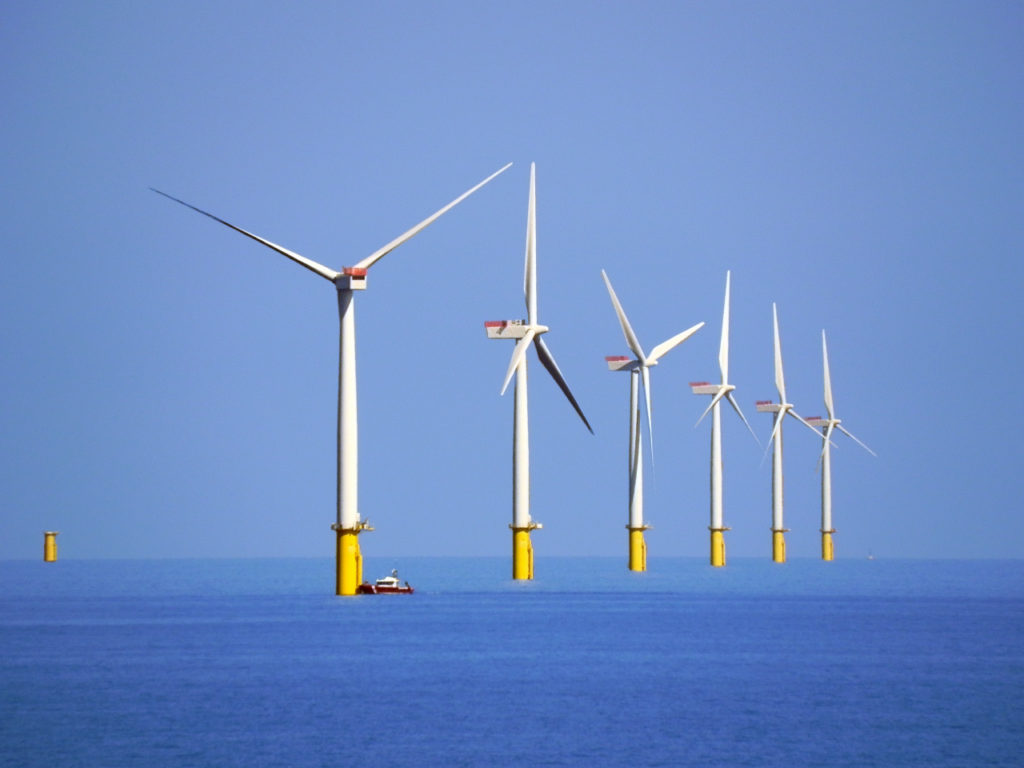The UK Government, Department of Business, Energy and Industrial Strategy has given development consent for the electrical system required to transmit the power that will be produced by the 900-MW Triton Knoll offshore wind farm. The Triton Knoll windfarm has been in development since 2004 and permission was given for the project’s offshore wind turbines in summer 2013. The government has now given the go-ahead for the electrical system needed to transfer the power into the grid.
Triton Knoll is a proposed offshore wind farm located off the east coast of England. The project is a joint venture between RWE Innogy and Statkraft. Both companies have an equal share in the project and work is being completed by a joint project team. The project could potentially generate up to 900MW of renewable energy, providing enough renewable electricity to meet the average needs of up to 800,000 average UK households each year.
Although still in the development phase, over £18 million has already been invested in the UK as a result of this project with £1.75 million invested in the East Coast of England. It is anticipated that a substantial proportion of contracts associated with the construction of Triton Knoll would be awarded to UK companies. RWE Innogy states, “Triton Knoll represents a multi-billion pound investment in clean green UK energy infrastructure”.
Triton Knoll Offshore Wind Farm is being developed as two separate packages. The Offshore Array and The Electrical System.
The Offshore Array– the wind turbines (up to 288 wind turbines and their foundations), meteorological masts, offshore substations and the cables that link the wind turbines to the offshore substations. The Secretary of State granted a Development Consent Order (DCO) for the offshore array on 12th July 2013. Following technical and commercial optimisation studies undertaken by TKOWFL, together with discussions with the Crown Estate, in January 2014 it was decided to reduce the overall generating capacity of the scheme to a maximum of 900 MW. This review meant significant reductions to the required onshore footprint of Triton Knoll Electrical System.
The Electrical System – the substation, underground cables, the offshore export cables an electrical compound along the onshore cable route. In order to connect the offshore wind farm to the electricity network, electrical infrastructure is required both onshore and offshore. The power generated by the offshore wind turbines will be collected by the offshore substation platforms and transformed to a suitable voltage for export, before being exported by subsea and underground cabling. The Triton Knoll Electrical System examination was formally closed by the Planning Inspectorate on March 3, 2016.
This application for the Triton Knoll Electrical System has now been given development consent by the Department of Business, Energy and Industrial Strategy. The Planning Inspectorate stated: “Triton Knoll Electrical System works are needed to transmit the electricity generated by the consented Triton Knoll Offshore Wind Farm to the National Grid substation at Bicker Fen in Lincolnshire”, and that, “the Secretary of State for Energy and Climate Change directed on 14 November 2013 (in accordance with section 105 of the Planning Act 2008) that these works require development consent under the Planning Act 2008. The electrical system will include: onshore and offshore buried export cables and associated works; an intermediate electrical compound to provide voltage stability and compensate for electrical losses; and a substation located in the vicinity of the grid connection point.”
The Planning Inspectorate also stated that it is committed to giving local communities the opportunity of being involved in the examination of projects that may affect them. Local people, the local authority and other interested parties were able to participate in the 6-month long examination. Almost 200 people made representations about the project. The Examining Authority listened and gave full consideration to local views before making their recommendation. Sarah Richards, Chief Executive of The Planning Inspectorate said: “A major priority for us over the course of the examination was to ensure that communities who might be affected by this proposal had the opportunity to put forward their views. As always, the Examining Authority gave careful consideration to these before reaching a conclusion.” The decision, the recommendation made by the Examining Authority to the Secretary of State and the evidence considered by the Examining Authority in reaching its recommendation are publicly available on the National Infrastructure Planning website.
